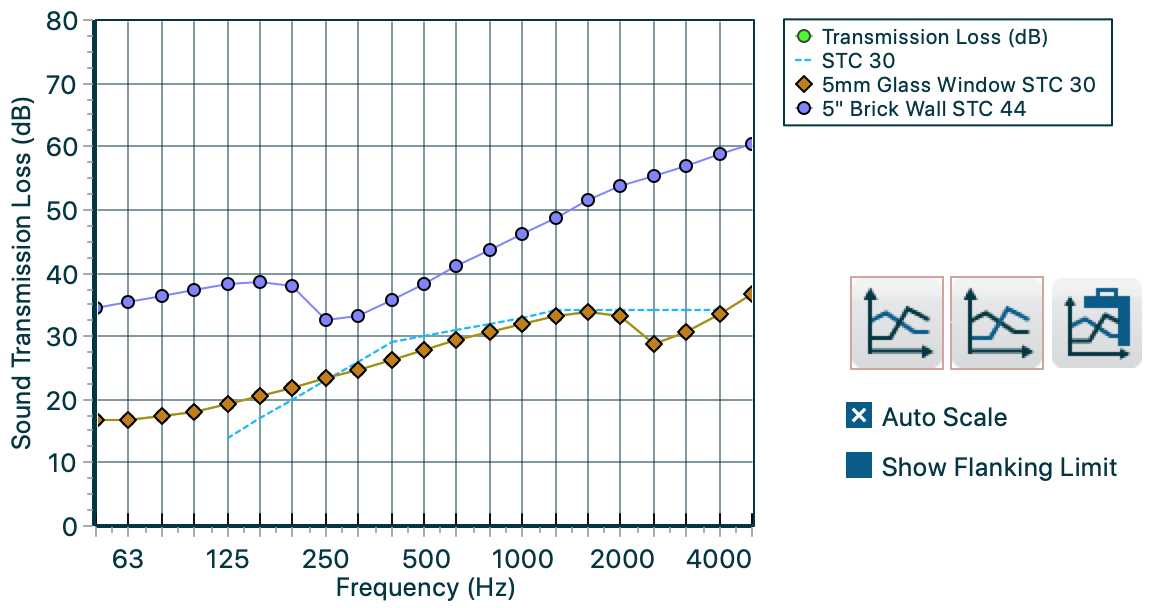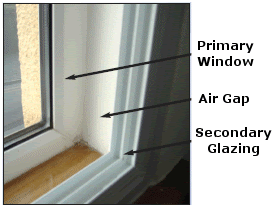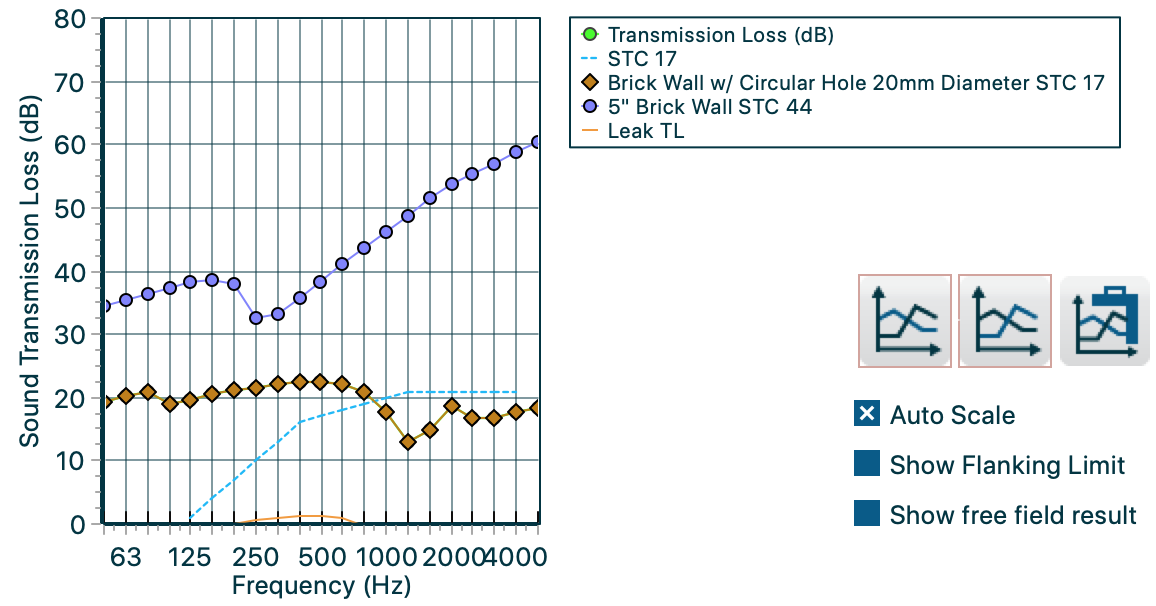A lot of times our clients contact us asking for acoustic panels to stop train or highway traffic and honking noise entering their homes. Alternatively, the problems could be children playing downstairs or dogs barking at night.
This article will explain the fundamental approach to solving this problem.
UNDERSTANDING THE PROBLEM PART 1 – MASS LAW:
Sound obeys the mass law. In principle, the law suggests that the sound insulation of a solid surface (wall/ceiling/floor) will increase by approximately 5 dB per doubling of mass. So heavier and thicker surfaces block sound better than lighter and thinner surfaces.
In India, our walls are typically made from brick (4-6 inches), while standard windows are fitted with ordinary toughened glass (4-6 mm). Many sliding systems also have small gaps between the frames. So the windows are much lighter than the walls and the graph below shows you the Sound Transmission Loss (STC) graph for the wall (blue) and window (brown). Clearly, the wall is not the problem – the window is.

Over 90% of outside sound enters via windows and balcony doors (if present). Adding a secondary soundproof window will solve your problem. We recommend Fenesta windows because they offer automobile-grade engineering and you can contact them directly from www.fenesta.com. Other recommended brands are Encraft, Veka, Kommerling, Schuoco.
Try to find the best brand in your city. Aural Exchange does not supply windows because there are plenty of window suppliers in every city in India.
SECONDARY GLAZING
Remember, if your problem is intense, adding a secondary window is much better than replacing the existing window. Two windows working together is called secondary glazing, and gives amazing results. Secondary glazing involves installing a “secondary” window, i.e. a fully independent internal window, on the internal room side of your existing primary window.
Fitting an internal secondary window forms double glazing with your existing single glazed window. The secondary window is a separate unit consisting of a single glazed pane within its own frame and is fitted on the room side of your existing windows and sealed around the edges.
The secondary window can be sliding type or casement type, as you prefer.

RECOMMENDED GLASS SECTION – CHECK FOR COMPATIBILITY WITH YOUR VENDOR
- Specification of Glass (24mm Section): 10mm Glass + 2.28PVB + 10mm Glass
- Specification of Glass (34mm Section): 12mm Glass + 10mm Argon Gap + [6mm Glass + 1.52PVB + 5mm Glass]
- Specification of Glass (40mm Section): [6mm Glass + 1.52PVB + 5mm Glass] + 15mm Argon Gap +12mm Glass
UNDERSTANDING THE PROBLEM PART 2 – LEAKS
Sound also behaves like water, in the sense that it looks for weak links in a structure and almost all the energy passes through it. Just like water will always find a crack or hole in a ceiling/wall and leak through it.
To understand the importance of leaks, consider the Sound Transmission Loss (STC) graph for a 10ft x 10ft wall vs the same wall with a small 20mm hole drilled into it to simulate a leak. You will see that even a small hole dramatically decreases the soundproofing ability of the wall:

If your existing windows are not forming an airtight seal around every joint, you should fix sound leaks by using rubber gaskets / seals like the Nankarrow ProWing or the Nankarrow NeoSeal around all openings or gaps. You can even find inexpensive rubber seals on Amazon.
